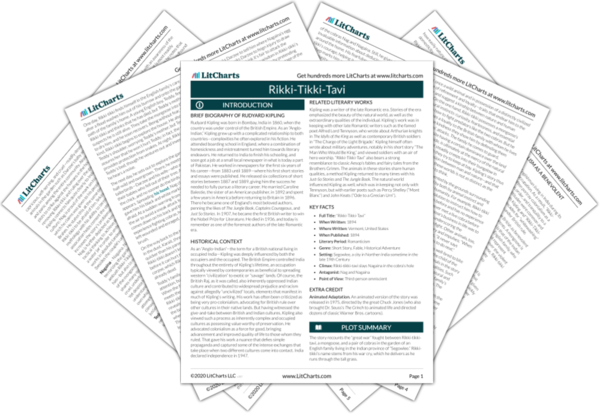Kipling was a writer of the late Romantic era. Stories of the era emphasized the beauty of the natural world, as well as the extraordinary qualities of the individual. Kipling’s work was in keeping with other late Romantic writers such as the famed poet Alfred Lord Tennyson, who wrote about Arthurian knights in
The Idylls of the King as well as contemporary British soldiers in “The Charge of the Light Brigade.” Kipling himself often wrote about military adventures, notably in his short story “The Man Who Would Be King,” and viewed soldiers with an air of hero worship. “Rikki-Tikki-Tavi” also bears a strong resemblance to classic Aesop’s fables and fairy tales from the Brothers Grimm. The animals in these stories share human qualities, a method Kipling returned to many times with his
Just-So Stories and
The Jungle Book. The natural world influenced Kipling as well, which was in keeping not only with Tennyson, but with earlier poets such as Percy Shelley (“Mont Blanc”) and John Keats (“Ode to a Grecian Urn”).
